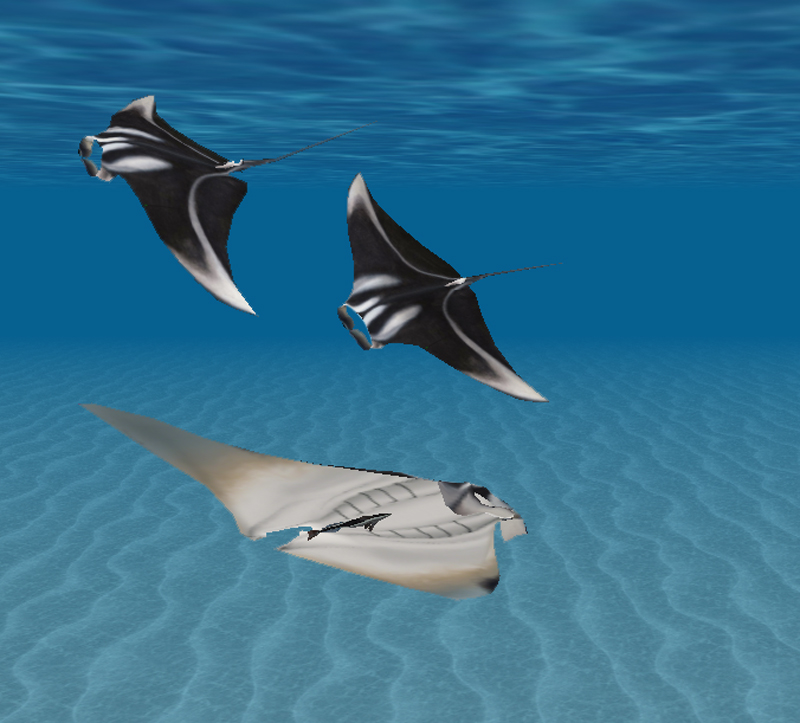Manta rays are large rays that can reach 7 m (23 ft) in width.
They have triangular pectoral fins, horn-shaped cephalic fins and large, forward-facing mouths. They are classified among the Myliobatiformes (stingrays and relatives) and are placed in the family Myliobatidae (eagle rays). They have the largest brains and brain to body ratio of all fish, and can pass the mirror test.
Mantas are found in warm temperate, subtropical and tropical waters.
They are filter feeders and eat large quantities of zooplankton, which they gather with their open mouths as they swim. Gestation lasts over a year and mantas give birth to live pups. Mantas may visit cleaning stations for the removal of parasites. Like whales, they breach for unknown reasons.
Manta Rays are listed as vulnerable by the International Union for Conservation of Nature. Anthropogenic threats include pollution, entanglement in fishing , and direct harvesting for their gill rakers for use in Chinese medicine. Their slow reproductive rate exacerbates these threats. They are protected in international waters by the Convention on Migratory Species of Wild Animals, but are more vulnerable closer to shore. Areas where mantas congregate are popular with tourists. Only a few public aquariums are large enough to house them.





